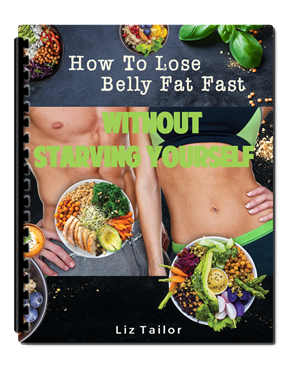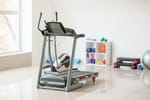Instinctively, most of us know that good eating habits are essential to maintaining our health and well-being.
Yet, many ignore that little voice of reason in their heads, which tries to warn them about eating too many unhealthy foods.
The biggest reason that causes inconsistencies in people’s dietary habits is misinformation.
Many of the advertisements surrounding the dietary value of foods are oftentimes misleading or misinterpreted by consumers.
This can lead to bad food choices and throw you completely off track, diet-wise.
Add to the equation the vast number of diet plans for weight loss and the trendy new cookbooks praising the latest fad revolutionary healthy foods to eat that hit the marketplace.
This massive collection of contradicting information coming at you from all sides is a recipe for disaster.
So, what should you do to develop good eating habits, when you don’t know what information to trust?
I’m glad you asked.
Today, I will provide you with twelve healthy eating tips that you can use as guidelines for making better food choices.
Let’s unpack this…
1)) Prepare Yourself for Success
To get on a better path to eating healthier, you must first prepare yourself mentally.
The easiest way to accomplish this is to plan in advance what you will eat during the week.
I recommend going through this planning process on one of your days off.
After you’ve completed your grocery list, either go out and shop for those items or have them delivered to your doorstep.
Time-Saving Tip: Research to see how much it’ll cost to have your groceries delivered to your home by places such as Whole Foods.
Then prepare your meals and freeze them in individual containers or freezer bags so that you don’t have to thaw out the entire amount.
Now instead of visiting the vending machine at work or a fast food restaurant, you could grab the healthy meals you prepared.
Planning and preparing your meals saves you both time and money, not to mention the plethora of health benefits.
2)) Protein Is Vital For Lean Muscle Mass
Make sure you eat protein in some form at every meal, including breakfast, because it’s the only macronutrient that can build muscle tissue.
Besides, protein isn’t stored in the body like carbohydrates and fats, which is why a small amount must be consumed with each meal throughout the day.
Remember, the more lean muscle mass you have, the more fat you’ll burn.
Try to consume 1 gram of protein per lean pound of muscle mass, NOT total body weight.
Tip: Don’t overconsume protein, because too much of it has been linked to the development of gout.
3)) Eat Less Refined Bread and Starches
Reduce your consumption of starchy carbs because they’re converted into simple sugar, which does nothing to make you healthier.
These simple sugars cause your insulin levels to spike, which may provide you with a short burst of energy right before you come crashing down.
The better option is to eat complex carbohydrates.
Yams are among the best carbs you can consume for stable and sustainable energy.
You should also throw some high-quality whole grains into your daily diet.
Do your waistline a favor and begin replacing starchy white foods such as bread with complex alternatives and whole grains.
4)) Limit Your Dairy Consumption
You should reduce your consumption of dairy-based products such as milk and yogurts.
Why?
Dairy consumption has been linked with the formation of mucus in the body and usually contains a lot of calories.
Some of the food products that contain dairy also have a very high amount of sugar.
If you’re concerned about not getting enough calcium, you should include calcium-rich veggies in your diet.
Examples of Calcium Rich Veggies:
- Spinach
- Brussels Sprouts
- Bok Choy
- Broccoli
- Kale
- Green Beans (a.k.a. Snap Beans)
- Collard Greens
- Butternut Squash
- Yams/Sweet Potatoes
If you must eat yogurt, I recommend researching those made with almond milk.
5)) Consume More Fiber Rich Foods
Dietary fiber bulks up and softens your stool which makes it easier to pass out of your body.
This is why nutritionists and doctors almost always recommend increasing fiber intake when their clients and patients experience constipation.
You’re in luck because fruits, veggies, legumes, and whole grains contain plenty of fiber.
Fiber is awesome because it can help to control blood sugar levels, reduce cholesterol, keep hunger pangs in check, etc.
Examples of Fiber Rich Foods:
- Berries
- Whole Grains
- Apples
- Nuts
- Raspberries
- Lentils
- Yams/Sweet Potatoes
- Avocado
- Brussels sprouts
- Quinoa
- Almonds
- Pears
- Broccoli
- Edamame
- Bananas
Avoid processed fruit juices that can be stored in the cupboard, because they are loaded with sugar and preservatives.
Consuming fresh fruits and veggies is the best way to get the most fiber.
Simply include fiber-rich fruits and veggies in your diet starting today!
6)) Eat Nuts
Stay in the moderation zone when adding nuts to your diet because you don’t want to go overboard with protein consumption.
Remember earlier, I informed you that eating too much protein can possibly cause the development of gout and that protein is not stored in the body like carbohydrates and fats.
Excessive protein intake will be converted into fat due to the extra calories.
On the positive side, nuts are a good source of protein, which is necessary for building lean muscle mass.
7)) Reduce Portion Size
When at home, use smaller plates and drinkware. If you go out, order the smaller size or if one size fits all, get a doggie bag in advance and put half your meal in it before you start to eat.
These simple psychological tricks can do wonders for getting you to consume fewer calories by not overeating.
It’s human nature to eat everything on our plates.
By eating off of a smaller plate, we trick our minds into believing we’ve eaten more than we have.
Use a smaller plate the next time you go to eat, and you might just be surprised at how much weight you lose if you remain consistent with this process.
8)) Drink Lots Of Water
Water has great dietary and overall health benefits. Many hunger pangs are caused by a lack of H2O consumption.
Drinking plenty of water throughout the day will keep you hydrated and can reduce food cravings.
It’s part of every function that takes place in our bodies.
Tip: Never drink water or any other fluid with your meals, because this washes away the digestive enzymes used to break down your food. Instead, drink your fluids either 45 minutes to an hour before or after you consume your meals.
9)) Go Meatless For One Meal per Day
Try eating one meal per day with no meat. For example, have peanut butter (made in a blender from whole peanuts) and a jam sandwich on wholegrain bread rather than a hamburger.
This alone will drastically reduce your consumption of saturated fat while increasing complex carbs, protein, and fiber intake.
These powerful diet tweaks can make all the difference in getting into the best shape of your life.
10)) Never Skip Breakfast
You may have heard it a thousand times that breakfast is the most important meal of the day.
The reason is that a healthy breakfast can jump-start your metabolism.
Many people are of the belief that skipping breakfast will help them lose weight, but the opposite is true.
A breakfast rich in complex carbs, healthy fats, proteins, and fiber provides the nutrients your body needs to maintain stable blood sugar levels, provides energy, and burns fats.
So, the moral of the story is to not skip breakfast.
11)) Eat More Seafood
The biggest reason for including some seafood in your diet 2-3 times per week is to bring more omega-3 fatty acids and protein into the mix.
Fatty acids are known to protect the heart, reduce blood pressure levels, reduce the risk of blood clots, lowers LDL cholesterol, reduce the risk of heart attacks and strokes, etc.
It’s worth repeating again; don’t overconsume seafood because of the high protein count, which can potentially bring on gout, not to mention the risk of getting mercury poisoning depending upon the type.
You could eat water-packed tuna and salmon; they are loaded with omega-3 fatty.
Unless you’re allergic to seafood, begin including it in your diet immediately to reap the health benefits.
12)) Bring Your Own Lunch
Rather than eating out at a fast food restaurant or from a vending machine, prepare your lunches.
If you’d like to treat yourself to a good restaurant-style lunch, try your best to limit it to once per week.
Refer to Tip 1: Prepare Yourself for Success to refresh your memory.
Over time, this will save you a ton of money and help to keep those extra pounds off.
Conclusion
I’ve just shared with you 12 Healthy Eating Tips To Boost Weight Loss and if you apply them consistently, there’s no reason why you won’t get results.
Remember this; at least 80% of your physical results will come from your diet.
Resistance training and cardio are a stimulus that breaks down your muscle cells, but proper recovery through diet, various forms of stretching, and sleep are where the magic happens and the rebuilding begins.
So, think of these tips as guidelines you can use to change your eating habits for the better.
I’m telling you that once you begin implementing them, eating healthy will become second nature.
Don’t complicate the dieting process because once you learn the basic principles, implementation becomes a breeze.
So, don’t wait another minute, start your lifelong journey to better health.
I hope this helps.
Download Our Free E-book!







